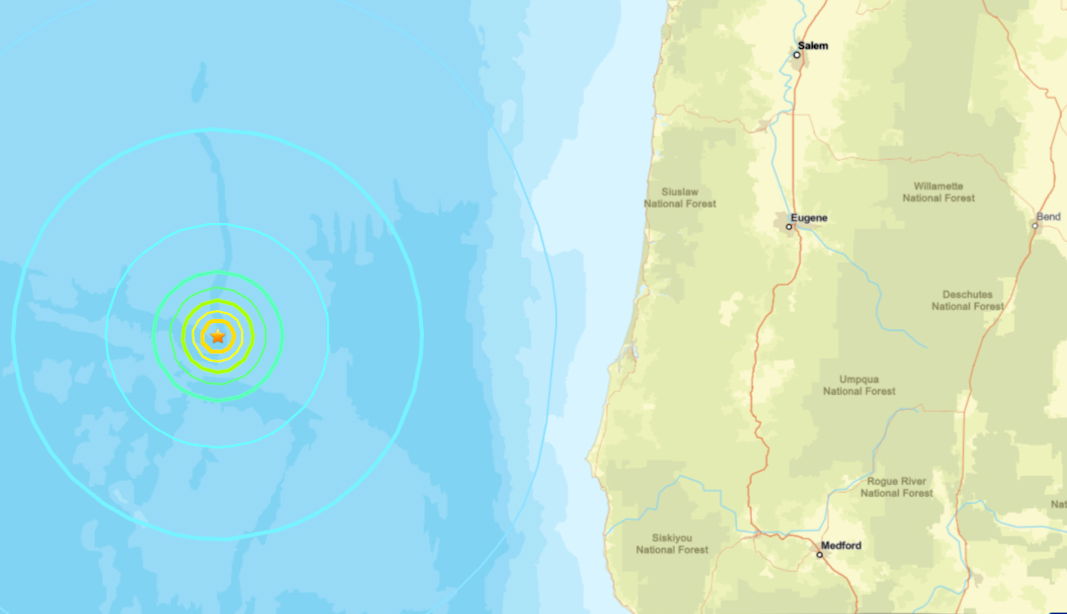5.9-magnitude earthquake rumbles off southern Oregon coast; over two-dozen people report feeling it

Barney Lerten
(Update: More information, background from USGS spokesman)
BANDON, Ore. (KTVZ) — A 5.9-magnitude earthquake rumbled off the southern Oregon coast late Thursday night, and several people felt it onshore, the U.S. Geological Survey reported.
No tsunami alerts were issued, but by midday Friday, 25 people had reported feeling the quake. It occurred around 11:45 p.m. Thursday nearly 150 miles west of Bandon at a depth of 10 kilometers, or more than six miles, the USGS said.
The quake was followed by a 3.0-magnitude aftershock around 12:22 a.m. on Friday, nearly five miles farther west and at the same depth, and another 3.0 shake to the north shortly after 3 a.m.
The USGS says earthquakes of that magnitude are not uncommon off the Oregon coast, with more than 160 of magnitude 5 or greater in the past 25 years.
USGS spokesman Steven Sobieszczyk told KTVZ News the latest quake occurred along the southern margin of the Cascadia Subduction Zone, well north of an area known as the Mendocino triple junction. where three major tectonic boundaries meet:
The San Andreas Fault, where the Pacific Plate slides past the North American Plate (a transform boundary, ie. north/south moving),
The Cascadia Subduction Zone, where the Juan de Fuca and Gorda Plates dive beneath the North American Plate (a convergent boundary, ie. one plate moves beneath another), and
The Mendocino Fracture Zone, another transform boundary between the Pacific and Gorda Plates.
 ‘Mendocino Triple Junction’ (U.S. Geological Survey)
‘Mendocino Triple Junction’ (U.S. Geological Survey)
“This unique intersection of plate boundaries causes the Mendocino triple junction to slowly migrate northward over time,” Sobieszczyk told us. “As it moves, the San Andreas Fault extends farther north, while the southern end of the Cascadia Subduction Zone retreats. This ongoing shift leads to a reorganization of the plate boundaries in the region.
“The earthquakes and seismic activity we see in this area are a direct result of these complex and dynamic interactions between the plates and the movement of the triple junction itself,” Sobieszczyk explained.